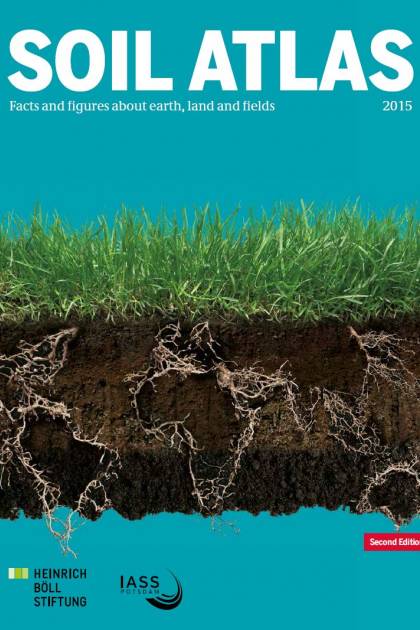Single News
Soil – a finite resource
BERLIN (NNA) – Every year, 24 billion tons of fertile soil is lost worldwide due to non-sustainable use. With the International Year of Soils 2015, the United Nations has been working to raise awareness of the importance of soil conservation for the natural ecosystem.
According to the Soil Atlas produced by the German Heinrich Böll Foundation, even in countries with falling population figures an increasing amount of soil is being used up. Every day around 77 hectares of soil partially or completely lose their natural function. This correspends to an area the size of 100 football pitches which is no longer avaliable for the production of food.
The covering of land because of the road construction and other building is the cause of this loss of land, but intensive farming is also responsible due to the introduction of heavy machinery that compacts the soil structure. Pesticides and chemical fertilisers reduce the life of the soil, wind and water erosion likewise lead to a soil loss.
According to the Soil Atlas, which was produced in cooperation with the Institute for Advanced Sustainability Studies, the Bund Naturschutz (BUND) and the newspaper Le Monde diplomatique, “we are using the soil as if it were inexhaustable”. It frequently takes “several thousand years to build a thin layer of fertile topsoil, but only an hour of heavy rain to lose it”. Soil is “unrenewable within human periods of time”.
It is in this context that the International Year of Soils 2015 has been working to raise awareness of this global challenge. The Soil Atlas emphasises that individuals can also do something to help through the consumption of locally sourced produce and less meat. In the European Union, 60 percent of cultivated crops end up in the feeding troughs of livestock. This practice is “extremely inefficient” considering that 100 calories of crop results in only 17–30 calories of meat.
The proposition of an International Year of Soils was supported by over 160 member states of the FAO World Council. According to the resolution passed by the UN General Assembly, the International Year of Soils 2015 should offer “a platform to raise awareness of the conservation of land and soil across the world”. To keep people informed about the activities taking place in the Year of Soils, each country has its own website. Competitions were held for amateur photographers and school classes.
Demanding better conditions
To coincide with the International Year of Soils, the biodynamic brand and certification organisation Demeter is demanding an improvement in the basic conditions for ecological farming. In a press release on the topic of soil and land conservation, Demeter emphasises that soil is an important foundation for the development of a farming ecostructure in which all elements (minerals, plants, animals and people) are interdependent.
Demeter chairman Alexander Gerber stressed that ecological farming and, above all, the biodynamic cultivation practices of Demeter are “the best methods of actively implementing soil conservation”. If new farmers are to be won over to this way of farming, then additional burdens should not be imposed on them, as is being currently threatened by the complete redrafting of the EU Organic Products Regulation. From the perspective of Demeter, the regulations and controls for ecological farming need to be gradually improved. “A complete revision of the Organic Products Regulation will only result in additional bureaucratic expenditure,” emphasises the organisation.
For Demeter, stopping the cultivation of genetically modified plants is also a part of soil conservation. “Genetically unmodified cultivation is not only an existential prerequisite for organic farming and the production of organic food. The cultivation of genetically modified plants is always accompanied by practices that damage the soil and environment,” says Gerber.
Unequal Distribution
The Soil Atlas produced by the Heinrich Böll Foundation also documents the unequal distribution of land worldwide and the soil and land use in various locations, for example in the European Union. Europe is the continet which is most dependent on agricultural produce from other continents. The Atlas also calculates a “land footprint”, that is, the amount of land needed to continue to ensure the current quality of life.
For the European Union this amounts to around 640 million hectares, which is one and a half times the area of all 28 member states. This land is taken from other parts of the world which is then unable to be used to support their own populations.
The Soil Atlas can be obtained for free from the Heinrich Böll Foundation or can be downloaded as a PDF.
END/nna/ung/hva
Item: 151117-02EN Date: 17 November 2015
Copyright 2015 News Network Anthroposophy Limited. All rights reserved.

